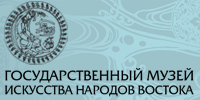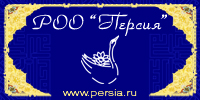Oriental Collection № 4/2012
Svetlana Sysoeva’s photo essay on Bhaktapur (Nepal), the ancient town included in the UNESCO World Heritage list, opens the last issue of 2012.
- Ksenia Leshchenko. Kizuna, Hieroglyph of the Year. The second article of the author dedicated to the catastrophe in the Japanese prefecture of Fukushima. This time the author shows the role of national mentality and people’s consolidation in the overcoming of the catastrophe’s consequences.
- Marina Mongush. Tuvinian House in Xinjiang. In the life of comparatively small group of Tuvinians, living in China’s Xinjiang Uyghur Autonomous Region, notable challenges happen: the marks of contemporary civilization are everywhere. In these conditions there comes a reasonable question: how to avoid the loss of national identity, to preserve their language and culture.
- Svetlana Ryzhakova. Oriental Elegies of Budapest. The mosque, the bath-house, the tomb of a Muslim saint — all this is a heritage of Ottoman past on the Hungary’s territory, a little piece of the Orient remaining in the very centre of Europe.
- Tatyana Solovyova. The Sparkling Ruins of Resafa. For its long history the ancient city had many owners. The Assyrians erected here their palaces, the Romans paved their roads, the Byzanthines built fortresses and churches, the Christian bedouins struggled against Muslim conquerors.
- Artyom Kobzev. The Way of «The Great Teaching» in Russia. «Dao Xue» («The Great Teaching») is the shortest text among the main Confucian canons. This is the philosophical treatise on a reasonable monarch’s managing his subjects, on ruler’s and official’s qualities. In Russia the interest to «The Great Teaching» was generated in 18th century, and then time readers found in its first translations into Russian some parallels with the political system of Russian Empire. Further there was formed the scientific interest to this monument. Our magazine publishes «Dao Xue» for the first time in the Dmitry Sivillov’s translation (1828) of the manuscript kept in the Russian State Library.
- Valentin Osipov. How India Discovered Russia. Review of the book «The Image of Russia in India’s Social Consciousness: the Past and the Present».
- Andrey Strelkov. Samye Monastery — the Model of Buddhist Universe. The foundation of Samye monastery in 810 was the beginning of the Buddhist monastery tradition in Tibet. The author of this article reconstructs the history of building this ancient hermitage and tells of his visit to Samye with a group of pilgrims.
- Aleksey Podtserob. Mysterious Garamantes. The origin of the Garamantes, the people belonged to the White Mediterranean race, is not known surely. The few frescoes and ruins of Garamantian fortresses are poor evidences of the past life of the state that flourished grate to Trans Sahara trade.
- Andrey Shugaev. News from Ceylon. The appearance of picture postcards in the late 19th century made possible to «stop an instant» and the travellers didn’t hesitate to use it. In the article’s author collection there are several postcards of our compatriots who visited Ceylon (Sri Lanka) in the beginning of the last century.
- Natalya Kazurova. The Diverse World of Ethnographic Cinema. The program of the 1st International Festival of Ethnographic Cinema, held this year in Astana, was of great variety. The traditionalism in documentary films by Oriental authors was natural and organic because in Oriental countries their popular traditions are still alive.
- Elena Katasonova. In the Nagisa Oshima’s Empire of Passions. The article is dedicated to the works of the famous Japanese film director Nagisa Oshima, whose films first shocked European spectators with their numerous erotic scenes. The article’s author using some historical examples shows that Japanese view to a naked body for many centuries was radically different comparing with classical European and even Indian.
- Konstantin Panchenko. Upward the Valley of Kadish. By travelling in Northern Lebanon the author turns to the history of the greatest in the Middle East concentration of Christians — the Marronites and the Orthodoxes. The Christian communities of the Middle East disappear rapidly along with the Lebanese cedars.
- Nikolay Listopadov. Burmese Indians. In South India there are whole blocks inhabited by Burmese people. Here there is the Burmese speech, the Burmese dishes are offered. Repatriates from Myanmar and their descendants became a separate community.
- «I Am the Facts Miner». For the Memory of the Academician B. L. Riftin. The outstanding sinologist Boris Riftin (1932–2012) was one of the most active members of editorial council and authors of the «Oriental Collection» magazine. He was known as a tireless researcher of Chinese manuscripts and book collections, as well as Chinese popular paintings. The magazine publishes the Boris Riftin’s article «The System of Signs and Symbols on Popular Painting» being a chapter of his book now to be published.
Our «Orientnet» section presents web resources on «National Trees of the East» theme.







